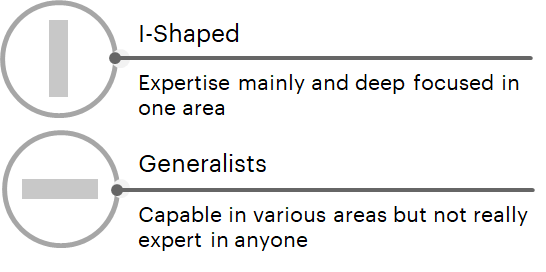New technologies, workplace approaches, and economic shifts have largely impacted the world of work. More human skills are requested (e.g., communication, empathy, adaptability) and, at the same time, organizations are seeking “pi-shaped” individuals with specialized expertise across multiple disciplines. What do these trends mean for agile professionals? A new report from Scrum Alliance and the Business Agility Institute sheds some light.
![]()
Scrum Alliance and the Business Agility Institute have released a few days ago a super interesting report named “SKILLS IN THE NEW WORLD OF WORK – Which Agile Skills are Most In-Demand in Today’s Workforce?” that can be downloaded here.
That report talks about the most in-demand skills for agilists in 2023 and provides many valuable insights on how organizations are trying to evolve their agile capabilities and what are the skills that are most-wanted in the new world of work that we are living: the post-pandemic and the new-generative AI.
We are still digesting the sheer volume of information that report contains and still trying to better forecast what could be the impacts on the “Agile Coaching Industry“; however, in this post we are going to summarize some of the key takeaways we found most relevant and reflect on what these trends could mean for agile practitioners and professionals.
On Agile Skills
The first finding confirms the tendence that organizations have finally understood the importance of human skills.
The report says that “today human skills are equally, if not even more important, than technical expertise.”
Skills like communication, collaboration, and emotional intelligence are key and mandatory for people to being able to work effectively in agile teams. This aligns very much with what we witness first-hand, everyday, in our coaching engagements: while foundational agile practices started to become better understood by several teams, there is still room for improvement when it comes exercise those “soft skills”.
Another important piece of learning from that report, emerges from the document when you read that the “demand is growing fast for T-shaped professionals, that are already very rare in organizations, to become PI-shaped“.
Well, let’s fist make some clarity on those concepts starting with who is someone that is a generalist or I-Shaped.

T-Shaped: the vertical bar on the letter T represents the depth of related skills and expertise in a single field, whereas the horizontal bar is the ability to collaborate across disciplines with experts in other areas and to apply knowledge in areas of expertise other than one’s own

PI-shaped: possessing depth across multiple disciplines (and not just one), while still possessing the ability to collaborate across diverse disciplines (vertical bar)

Just to cite a couple of examples that are not comprehensive: specialists with skills in both agile and software development or agile and business acumen in a specific domain are highly sought after.
It seems though that for Agilists, to be more appealing, they need to complement their primary skillset with adjacent competencies to unlock the most interesting career opportunities.
On Agile Coaching
While agile coaching remains an important capability, it seems that the request for dedicated “pure” agile coach roles within the organizations, is declining: the expectation is that agile skills have to become ingrained across all roles.

Whatever agile coach you are, part of an organization who sells products/services or employee of a consulting firm, you must expand your skillsets beyond basic agile proficiency (e.g change management, leadership development, organizational design, acquiring any business or domain knowledge, etc.).
Overall, for both individuals and companies, the message is clear: agile skills are now just the starting point
To truly thrive, all of us need to embrace the human aspects of agility and expand our capabilities far beyond specific methods or frameworks. Companies that invest in developing multifaceted, empathetic, and adaptable talents, will find themselves already out of the starting blocks running towards their objectives, while others are still positioning at the starting line.
On Agile Transformations
One insight that emerge from the report is that that demand for dedicated agile transformation roles is, also here, decreasing.
On the surface, one could think that this declining is thanks to the fact that organizations have already rolled out most of the foundational practices. However, this clarity is less evident
when we scratch the surface and want to see how much certain business agility practices go beyond individual teams, due to systemic constraints that continue to hinder broader agile adoption.
Our opinion is that many organizations are simply shifting responsibility to implement changes onto existing staff, without providing adequate support, being largely driven by budget pressures and a misperception that agile can be fully embedded organically.
Conclusion
We are finally entered the era in which basic agile skills need to be present everywhere in every organizations, and human skills cannot be neglected anymore. The request will be less on Agile Roles but more on agile skills that have to be integrated with others, following the PI-Shaped concept.
Additionally, the agile coaching model needs to evolve from purely facilitating team-level adoption to guiding strategy and shaping culture at scale within the organization, thus expanding in that direction our skillsets while also educating organizations on when our deeper experience in transformation is mandatory.

With the right messaging and expanded capabilities, we believe experienced agile coaches can continue driving successful large-scale changes, even in the absence of dedicated transformation roles.



